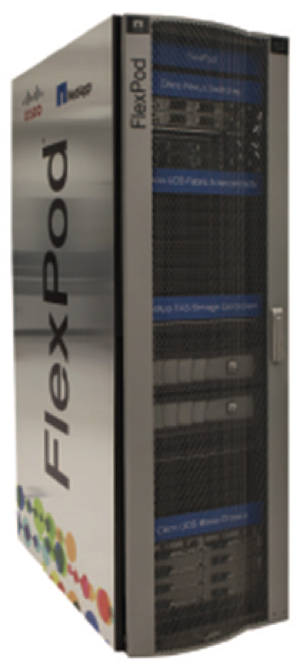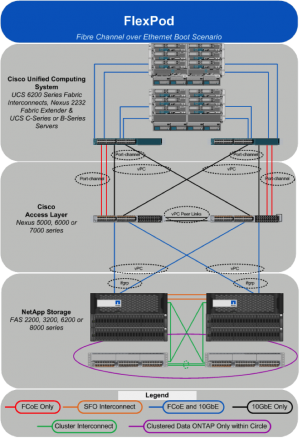This guest blog was authored by Frank Cicalese and contains summarized content from various articles that can be found on Cisco and NetApp’s sites.
 Frank Cicalese is a Technical Solutions Architect with Cisco’s Data Center Architecture Team helping customers globally with their Microsoft solutions on Cisco UCS. Frank also worked at Microsoft for over 10 years in several positions that required deep technical knowledge such as Services Consultant, Platform Architect, Database Technology Specialist, Virtualization Technology Specialist and Datacenter Technology Specialist. Frank has in-depth technical knowledge and proficiency with database design, optimization, replication and clustering and has extensive virtualization, identity and access management and application development skills. He is also a writer member of the American Society of Composers, Authors and Publishers with published musical works that have aired on well-known cable and news networks.
Frank Cicalese is a Technical Solutions Architect with Cisco’s Data Center Architecture Team helping customers globally with their Microsoft solutions on Cisco UCS. Frank also worked at Microsoft for over 10 years in several positions that required deep technical knowledge such as Services Consultant, Platform Architect, Database Technology Specialist, Virtualization Technology Specialist and Datacenter Technology Specialist. Frank has in-depth technical knowledge and proficiency with database design, optimization, replication and clustering and has extensive virtualization, identity and access management and application development skills. He is also a writer member of the American Society of Composers, Authors and Publishers with published musical works that have aired on well-known cable and news networks.

Cisco and NetApp have been teaming for several years developing the FlexPod solution portfolio. This portfolio includes architectures that combine NetApp storage systems, Cisco Unified Computing System servers, and Cisco Nexus fabric into an architecture that provides a highly efficient operational model for workload deployments. This architecture is capable of hosting mission critical SQL Server implementations and is capable of providing them with the required throughput and availability for even the most demanding business requirements.
Recently, Cisco and NetApp contracted Scalability Experts to implement a performance and load test that proves my claims in the above paragraph beyond any doubt in my mind.
Scalability Experts, for readers who may not be familiar with them, is a triple Gold Microsoft Partner, and highly awarded consulting company specializing in Data Platforms, Business Intelligence and Infrastructure Solutions. Scalability Experts conducted the performance and load testing over several months using real world workloads. More information on Scalability Experts can be found at http://www.scalabilityexperts.com/
The purpose of this performance and load test was to validate that FlexPod is a premiere platform for the most demanding applications. This performance and load test implements a real world gaming workload on Microsoft SQL Server 2014. Visual Studio 2013 Ultimate Edition was used to generate and run the performance and load tests. For more information about Visual Studio 2013 Ultimate Edition see http://msdn.microsoft.com/en-us/library/dd831853.aspx. More information about Microsoft SQL Server 2014 can be found at http://www.microsoft.com/en-us/server-cloud/products/sql-server/.
The tests for the performance and load test were created using Microsoft Visual Studio to record user actions which include back office, new player creation, gaming, and database maintenance activities. The gaming activity specifically consisted of logging on to the system, checking the player’s current cash and bonus balance, current loyalty point balance, playing on-line slot games multiple times for real money, reviewing game play history and awarding loyalty points accumulated from gaming activity.
The performance and load test revealed that the FlexPod architecture, when compared to other systems in the same class, can provide 208% faster transaction response times, 250% faster page response times to end-users, and 4X Concurrent Capacity Growth with 0% latency up to 40,000 concurrent users (with bursts up to 50,000 users). See the figure below for additional information on these metrics:
As you can see by the metrics above, the application was quite demanding and I am sure you will be impressed with the results of the tests presented in this performance and load test. You should find that these results transfer well to other workload scenarios as well.
Through iterative testing, the results show that the FlexPod architecture can scale linearly and provide world-class performance up to 50,000 concurrent users while maintaining a very efficient operational model that can help to reduce the complexity of datacenter operations – the complexities that many companies are plagued with today such as redundant, time consuming processes, long or delayed deployment times, high mean time to recovery (MTR) times, etc. All of which are significantly reduced by the innate capabilities of the FlexPod architecture empowering IT workers to focus on more proactive, productive tasks.
 The performance and load test was implemented on standard FlexPod equipment shown in this figure.
The performance and load test was implemented on standard FlexPod equipment shown in this figure.
It is important to note the goal of this performance and load test was not to compare FlexPod to other competing architectures. However, the results do provide a very compelling reason for architects and technical/ business decision makers to strongly consider FlexPod for their mission critical Microsoft SQL Server implementations. Also, as I mentioned, NetApp and Cisco have been teaming on and developing the FlexPod solution for a while now so the results of this testing really does not come as a surprise. FlexPod was designed from the ground up with stability, flexibility and high performance top of mind.
Finally, FlexPod can help companies provide the fastest time to market for their solutions. IT teams will not have to worry about the typical configuration details which can be a monumental task by itself for mission critical database implementations. FlexPod provides a completely integrated and configured environment that enables companies to deploy their solutions with known, tested and validated hardware quickly, efficiently and in a fashion that mitigates risk.
To learn more about the FlexPod solution, please see the following link where you will find various artifacts including Cisco Validated Designs, Design Guides and much more: http://www.cisco.com/c/en/us/solutions/data-center-virtualization/flexpod/index.html.
Additional information for NetApp can be found at http://www.netapp.com/us/.

FlexPod MS SQL 2014 Mission Critical CVD deployment guide is live on the following link: http://www.cisco.com/c/dam/en/us/td/docs/unified_computing/ucs/UCS_CVDs/sqlserver2014_flexpod_deploy.pdf